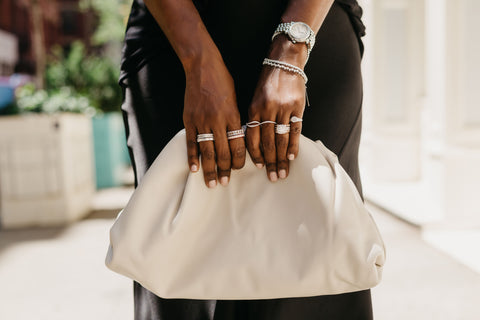When helping clients purchase an engagement ring or custom diamond piece, one of the first questions I ask them is “Do you want a lab-grown or natural diamond?” Some people know right off the bat, but oftentimes people aren’t sure. Let’s talk about the difference in composition and cost, and the pros and cons of a Lab-Grown vs Natural Diamond.
There is something to be said about the way a diamond can light up a woman's eye. Is it the way a beam of sunlight catches the crisp cut of the rock, inducing a star-like twinkle in the middle of the day? Or maybe it's the overcoming feeling of holding one of the Earth's oldest natural treasures that stop us right in our tracks. Diamonds hold to be one of our most precious gems, both in history and the present.

What is a Natural Diamond?
What is a Lab-Grown Diamond?
Is There a Price Difference Between Lab-grown and Natural?
Although many of us may desire a natural diamond over lab-grown due to its elegant authenticity, there are benefits to buying both! Lab-grown diamonds carry the same properties as natural diamonds, but because of their low cost of production, the consumer's cost is significantly less. On top of the reduced price, lab-grown diamonds have been viewed by many people as being more environmentally friendly, making them a much more ethical purchase. Natural diamonds, of course, not only hold their value but inevitably will increase over time. As these gems have been purchased for many years, their pricing holds more stable. Moreover, differing colors such as canary yellow or red are some of the rarest diamonds and will appreciate more quickly. The natural diamond industry has worked hard to transform itself over the last 20 years. Today, conflict diamonds have virtually been eliminated from the market through the UN-mandated Kimberley Process
Whichever you choose, both these gems are likely to put a sparkle in your eye and create a very special moment. After all, the saying "a diamond is a girl's best friend" is truly as timeless as the diamond itself.

